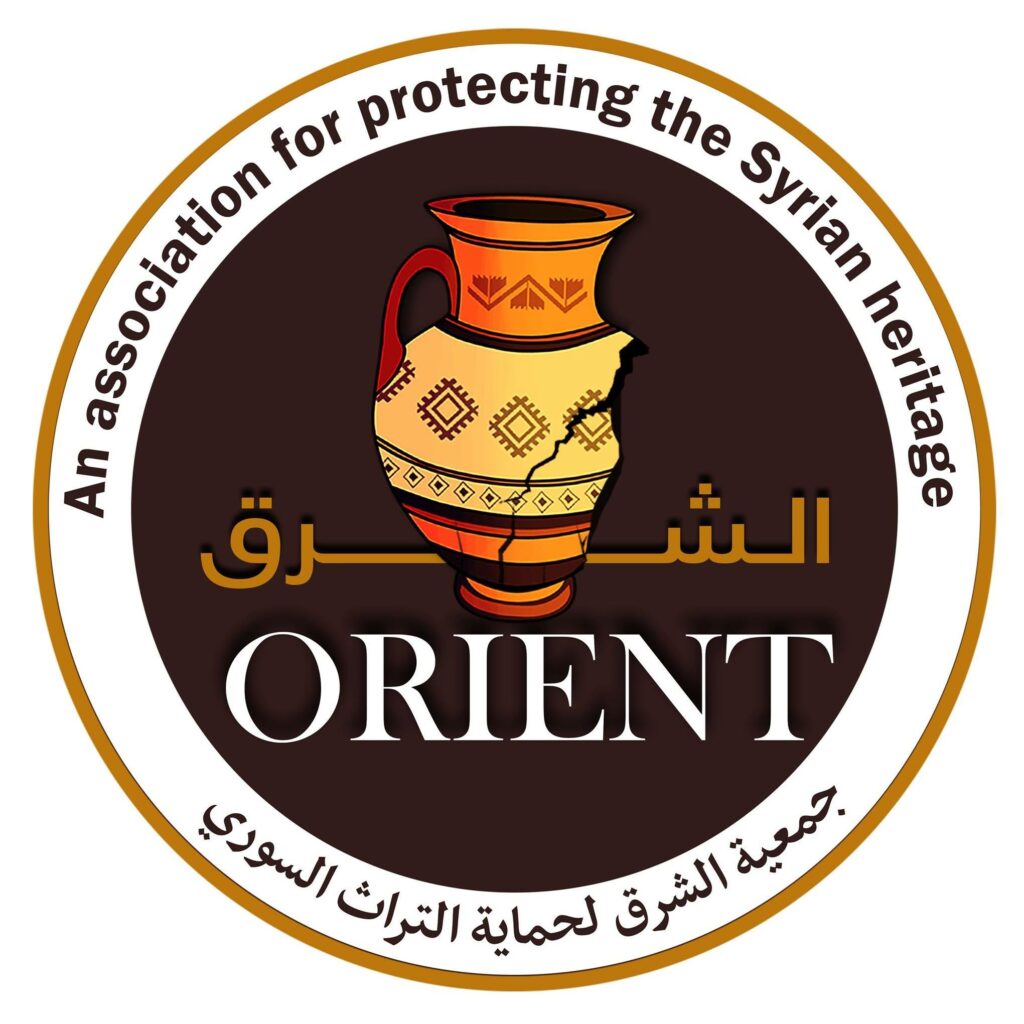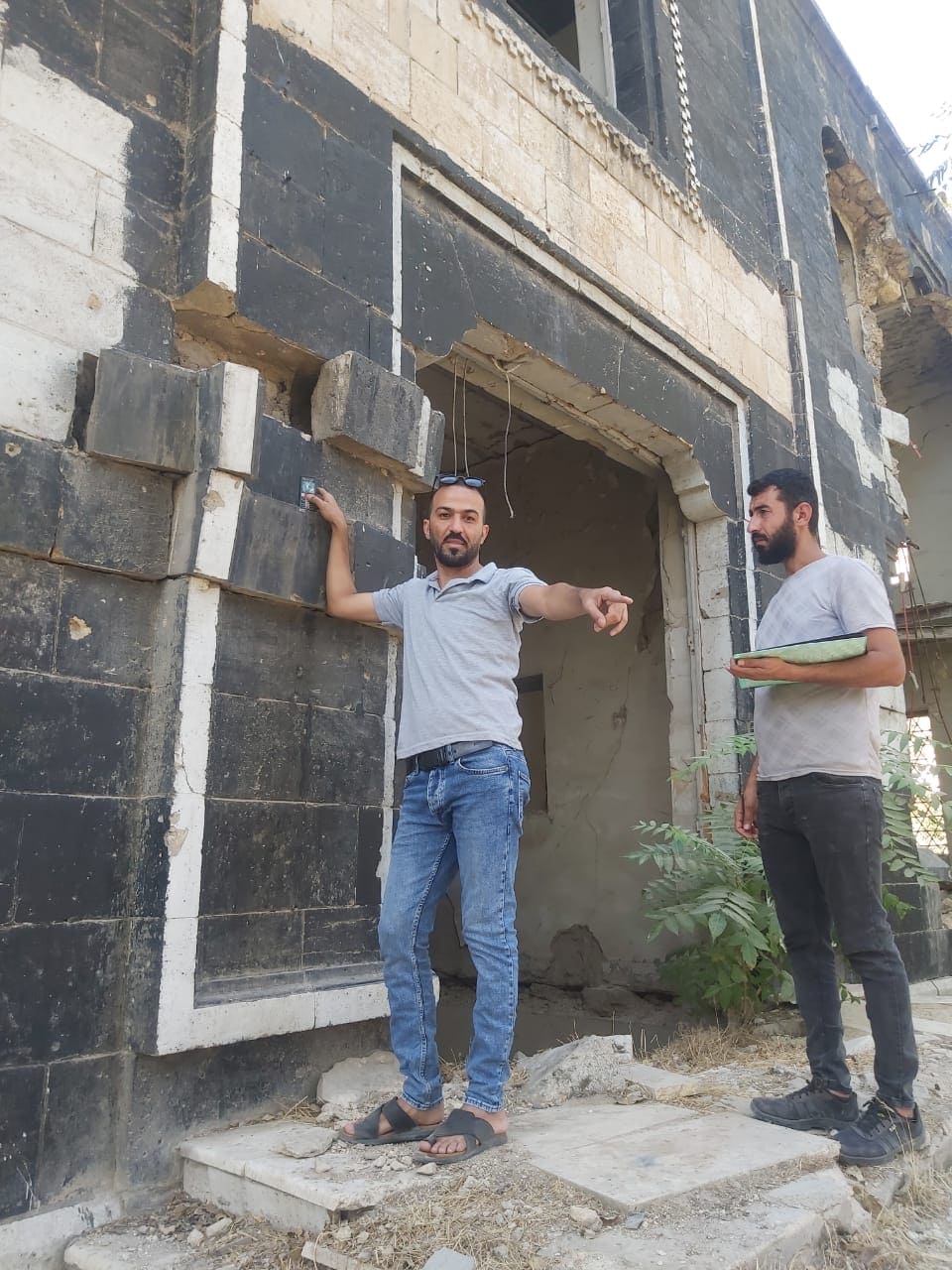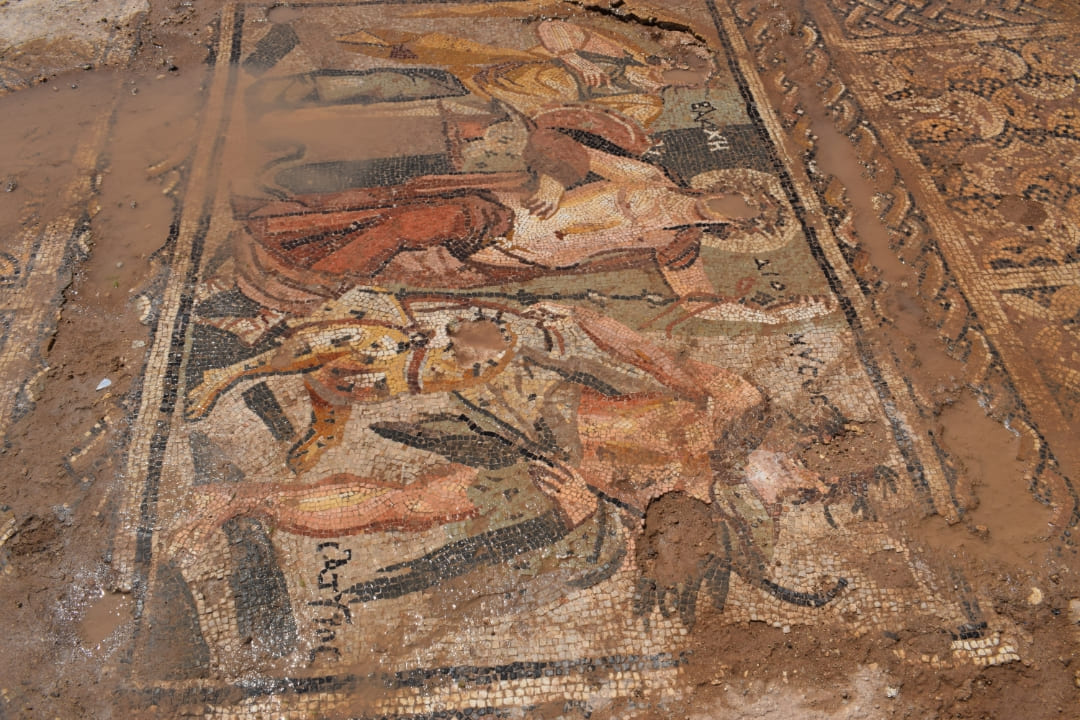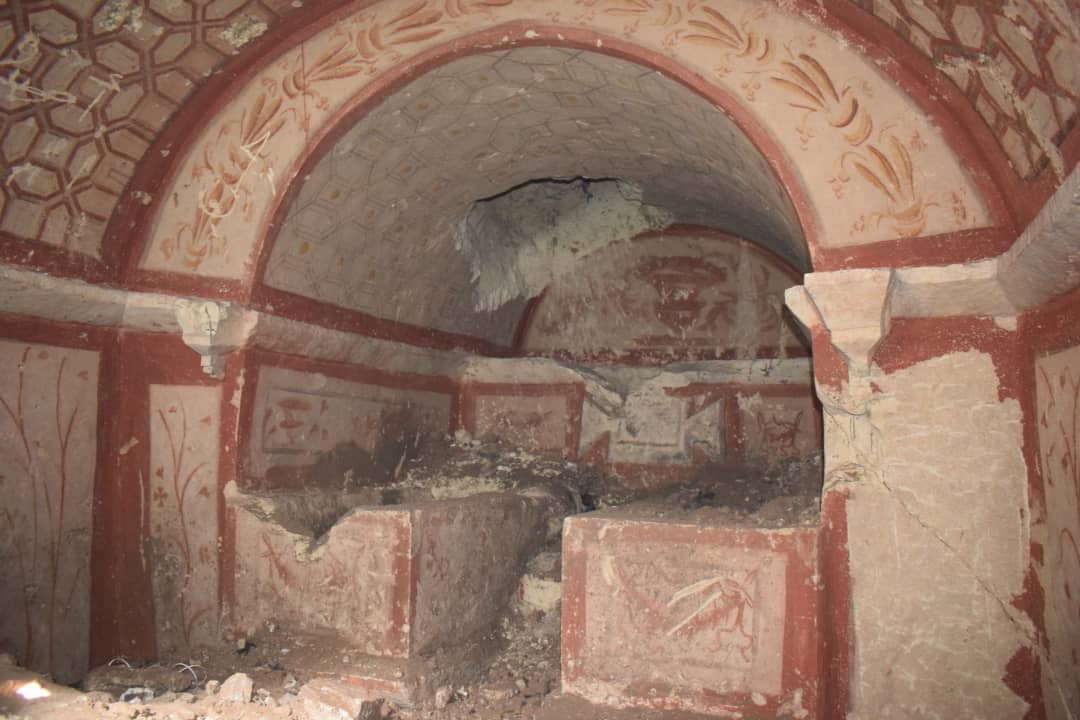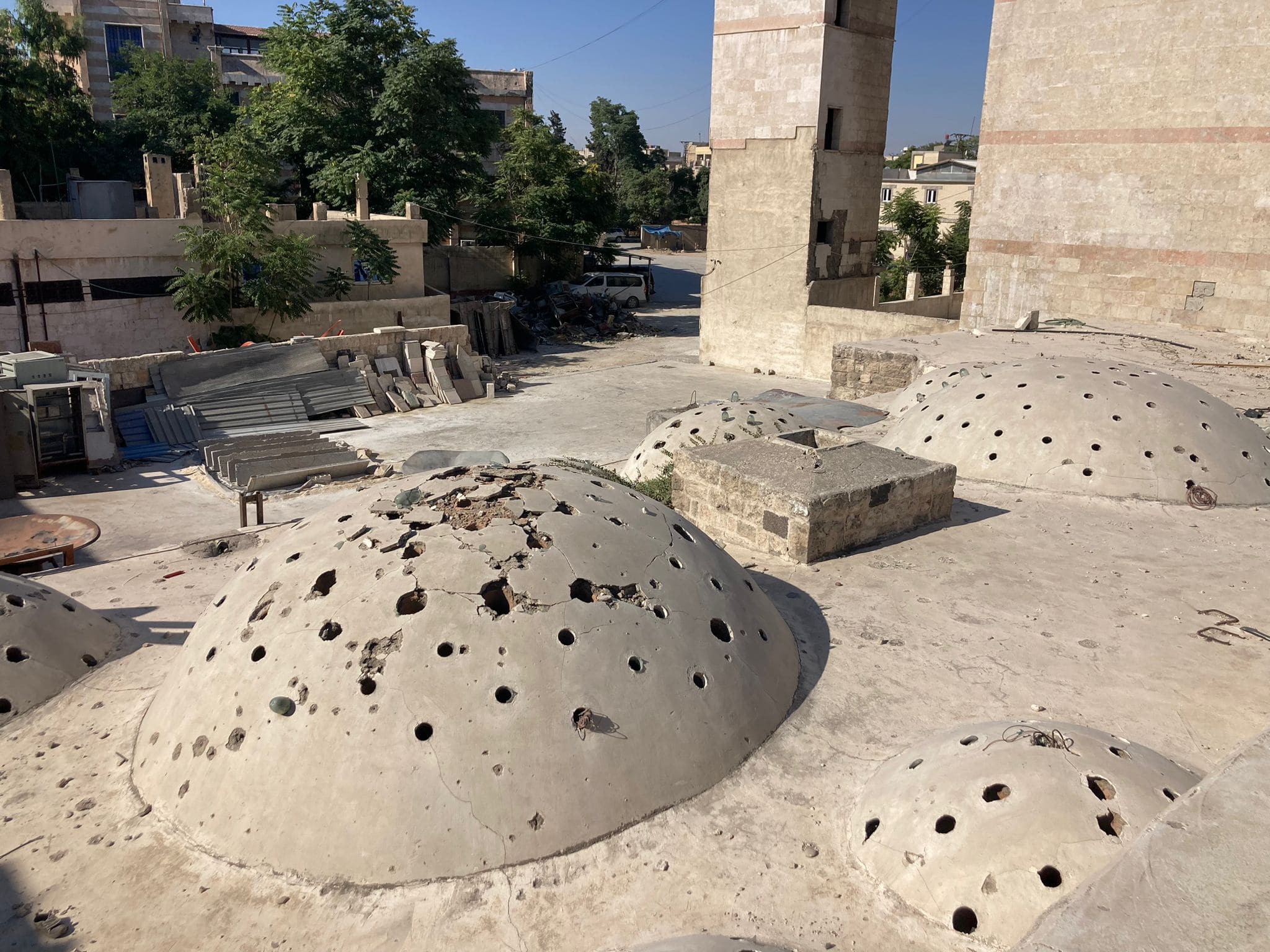Emergency intervention and damage assessment in Manbij
The importance of Heritage in Manbij
The city of Manbij has an extensive historical timeline, with multiple archaeological sites and monuments from the Bronze Age, Roman, late Byzantine, and Islamic periods. It was a site of regional significance during the Grecian era when it existed as Hierapolis, a major transit hub and center of worship for the Goddess Atargatis. Its location between Turkey and Syria has played a pivotal role in modern times as an escape city during the first six years of the war, and as a conflict zone between Syria and Turkey in the last six years of the conflict.
The heritage we aim to protect has a range of cultural significance and local value. The Syriac Church is a vestige of the early days of Christianity, and local divergence from the Church of Antioch to the Syriac Orthodox Church whose namesake is its country of origin (Syria). It is a valuable demonstration of the multiplicity of religions that have their roots in, and continue to exist in the region, and contains unique mosaics. The Al-Antabi tomb remains evidence and witness to the importance of the Roman civilization in the region, in particular the geometric artistic elements of the Byzantine era. The central room contains three graves, hosting graphics of narcissus and animals on their walls. The old Manbij Hammam, built during the Ottoman period is an establishment that embodies the city’s rich Isamic heritage. Its original use as an integrated place for hygienic and social functions was an integral part of Islamic culture at the time, and the use of Hammans remains a popular tradition within the modern Islamic world.
The preservation of these sites is fundamental to the historical memory of the local populations, as they represent the sweeping range of the city’s significance across multiple millennia and are a testament to the artistic and architectural prowess of their ancestors. The local community of Manbij has expressed their desire to preserve these heritage sites through the dedication of social media pages, flyers, and a direct appeal to the international community and heritage agencies to help them in documenting what has remained.
Cultural Heritage in Manbij at risk
ISIS occupied Manbij from 2014 to 2016. During this period cultural heritage suffered massive damage. Preliminary information documented some damage through media outlets and newspapers such as the Damage Mailing List by Heritage for Peace, whereas several other violations were witnessed by the local community.
The heritage we aim to protect faces three main threats: urban encroachment, looting, and deterioration due to neglect. Each of these risks are a direct result of continued instability arising from the ongoing conflict.
The continuous population displacement as a result of airstrikes has created a sense of immediacy among residents that often leads to the misuse of cultural heritage sites as points of utility. In the case of Manbij this is evident in the use of the Al-Antabi tomb as a place to dumb trash. Without intervention it is likely that the heritage sites in question will witness further damage as the result of urban repurposing.
Continued airstrikes and ISIS occupation have damaged the structural integrity of the Ottoman Hammam which led to cracks in the domes. Used as a military centre, part of its internal form was changed and without emergency stabilization the buildings of all three locations will suffer further decline.
During ISIS’ caliphate the city of Manbij served as a depot & marketplace for looted antiquities.
Throughout the conflict archaeological sites in Manbij have been damaged by looters, who have removed many of the areas depicting the faces of individuals. The unstable economic situation provides an incentive for looters to continue the removal and destruction of these sites.
Project activities
Phases:
1. Training on damage assessment, monitoring, preservation techniques, and the value of the monuments, structures, and cultural heritage artefacts after conflict. Theoretical content and methodological tools will be presented to the 15 identified professionals (online and face to face) but the essential part of the training will be implemented in the field.
2. Documentation and evaluation of archaeological sites and historic monuments (value and state of conservation), including a comprehensive survey of the entire historical city of Manbij, by the trained 15 professionals.
3. Emergency and consolidation interventions to the above-mentioned heritage sites: Al-Antabi tomb, Syriac Church, and Old Hammam. These interventions include maintenance, stabilisation, support, cleaning, and documentation works that form a first step in preventing looting and future collapse as a result of neglect. For this task, 30 workers and restoration specialists will be employed.
4. An interactive map highlighting the implemented works, locations, characteristics, and values of the historical monuments and archaeological sites of the whole city, will be elaborated, and distributed.
5. Awareness program which will include lectures, brochures, film about the cultural heritage in Manbij, and the basic skills to preserve it for the future generations. Targeted to the local community.
Outputs:
1. The professional development of 15 local architects and archaeologists in the field of heritage protection.
2. Detailed evaluation document concerning the archaeological sites and historic monuments of Manbij.
3. Documentation and preventive consolidation of the Al-Antabi tomb, the Syriac Church, and the Old Hammam.
4. An interactive map of heritage sites and areas of intervention.
5. The cultivation of value for the heritage in Manbij among the local population and the international community.
6. A publicly available digital and physical depository of the completed works and a short film documenting the program.
Partners in the project
RehabiMed Association is an initiative that represents the ongoing experience of partnership between institutions and organizations in over 40 Euro-Mediterranean countries.
The main objective is to promote the sustainable rehabilitation and restoration of historic buildings and the social and economic revitalization of historic centers around the Mediterranean area. RehabiMed, as a network of experts, today are over 400 members: Universities, government agencies, NGOs and experts in different fields. RehabiMed promote urban regeneration and sustainable restoration and rehabilitation of the historic buildings, working with different international organizations such as UNESCO, UN-Habitat, UNDP, GIZ, AFD, AECID, and others.
Orient Association
